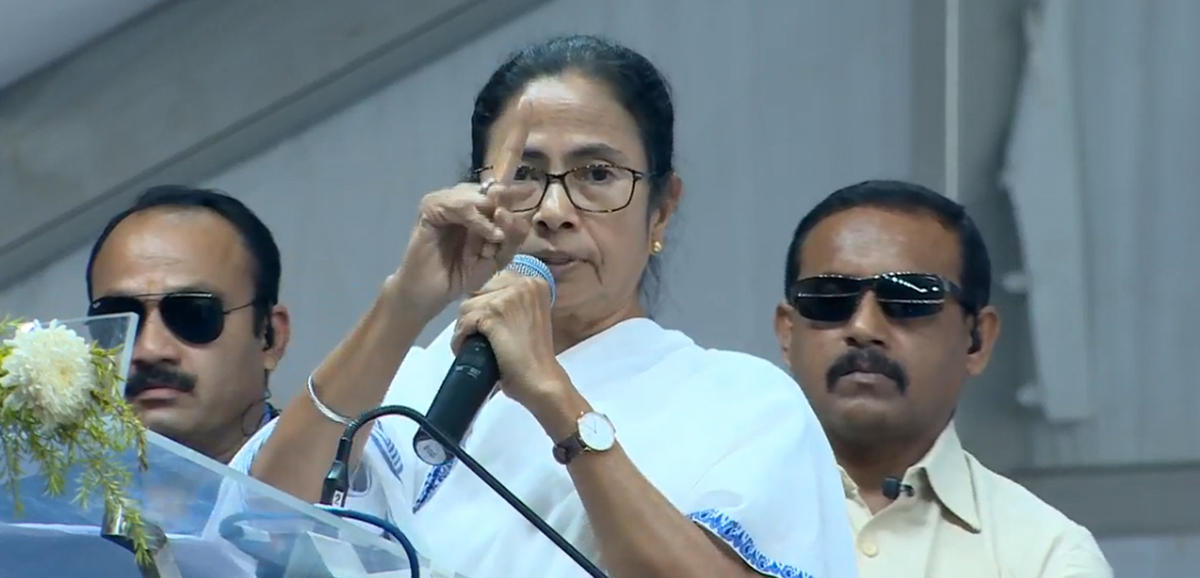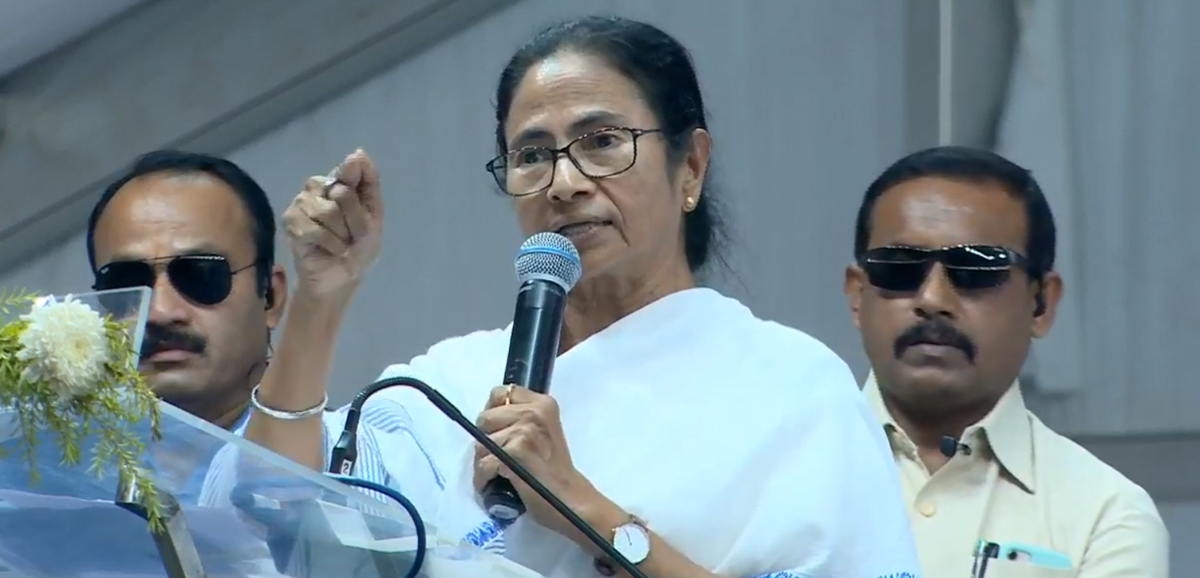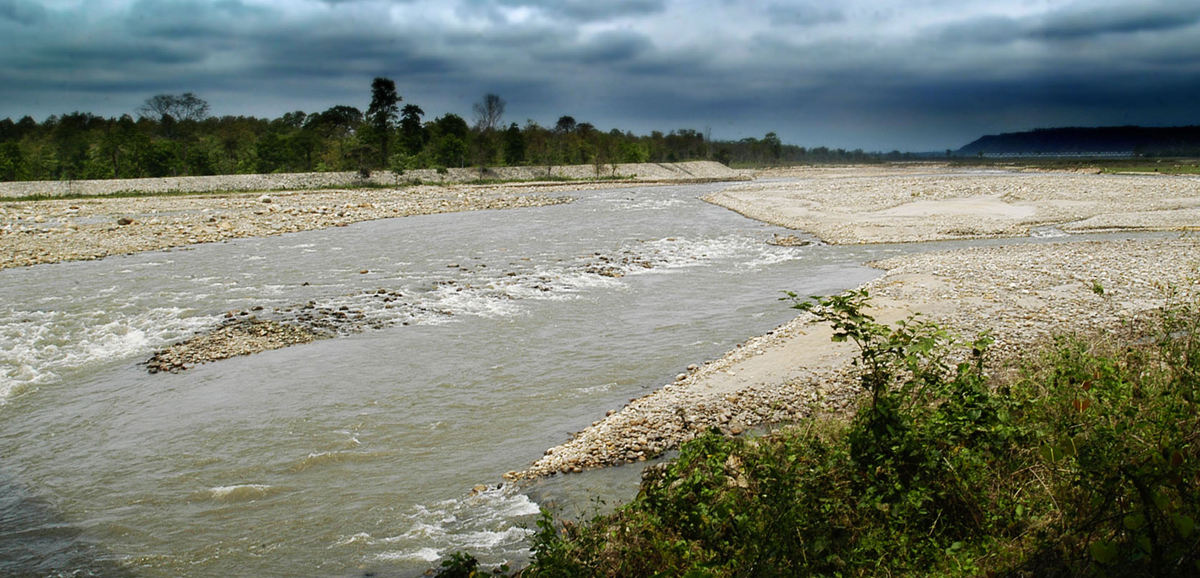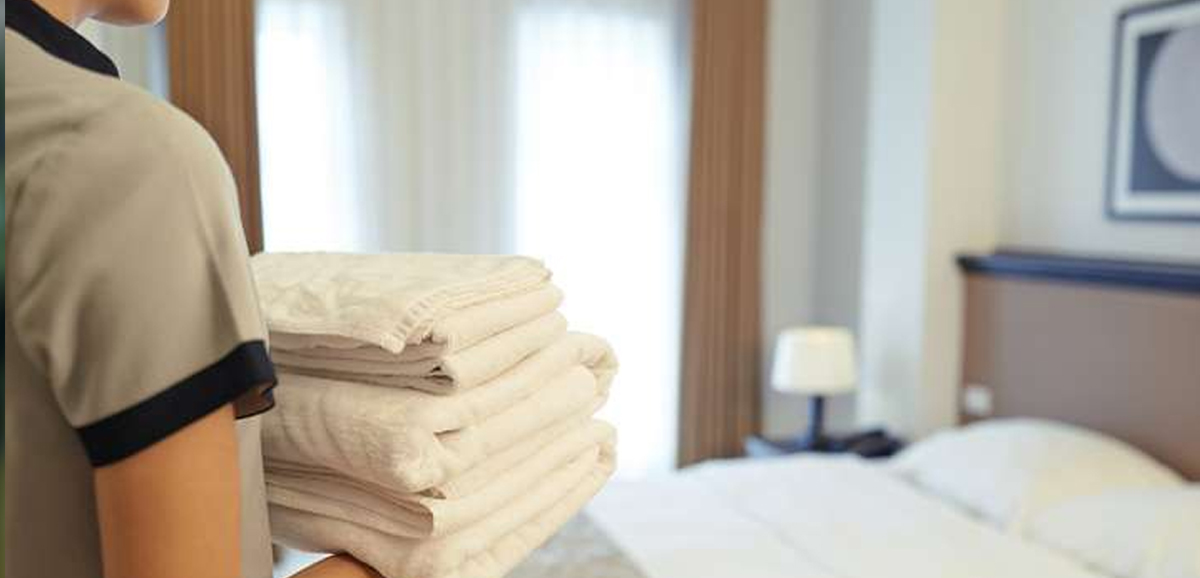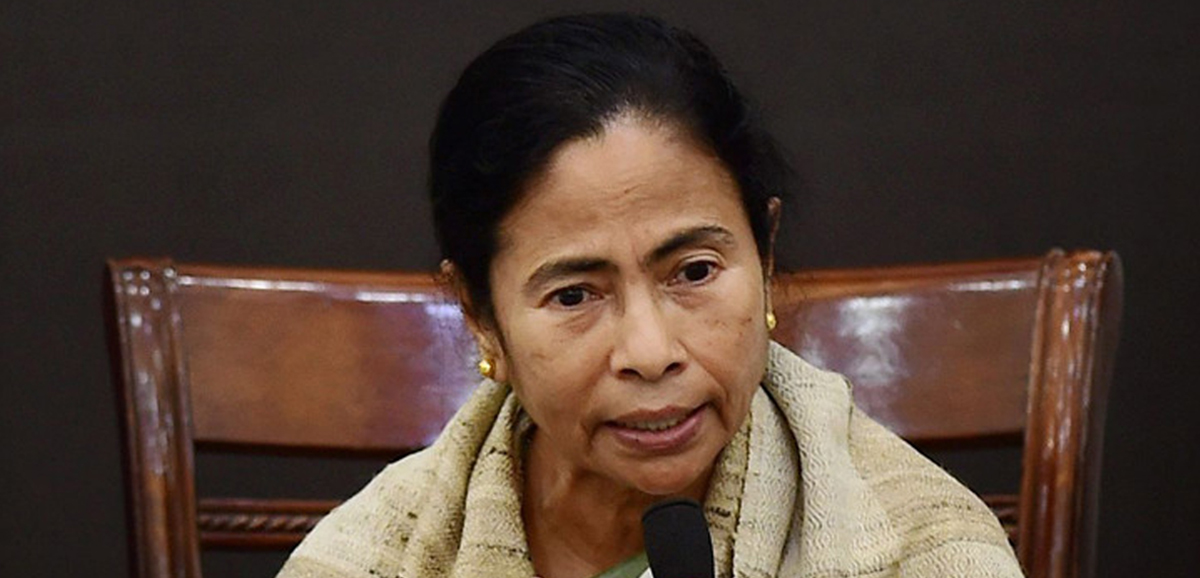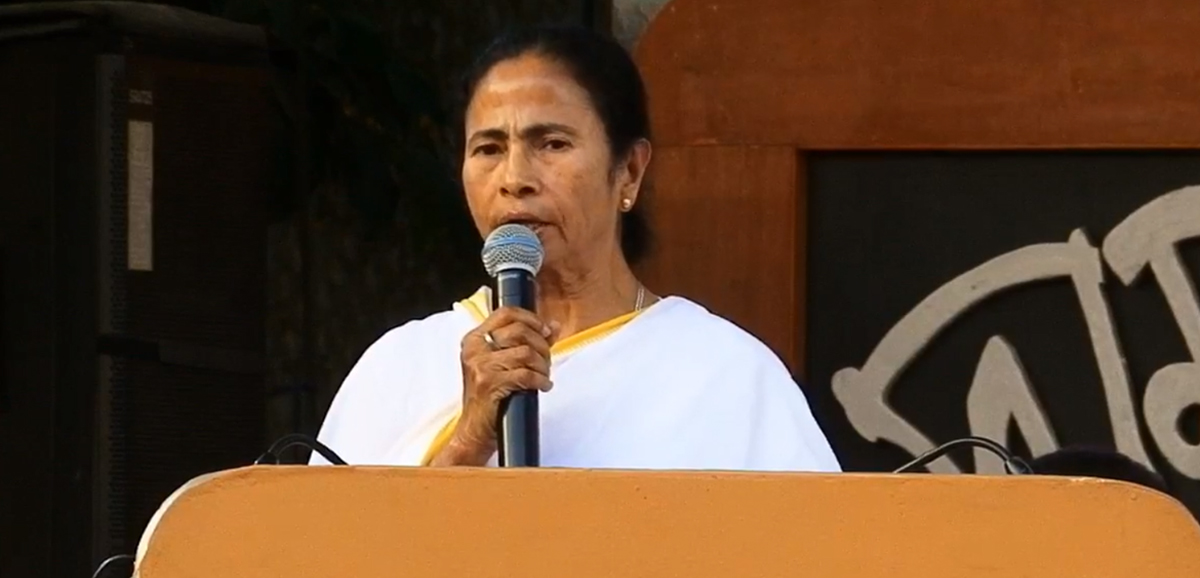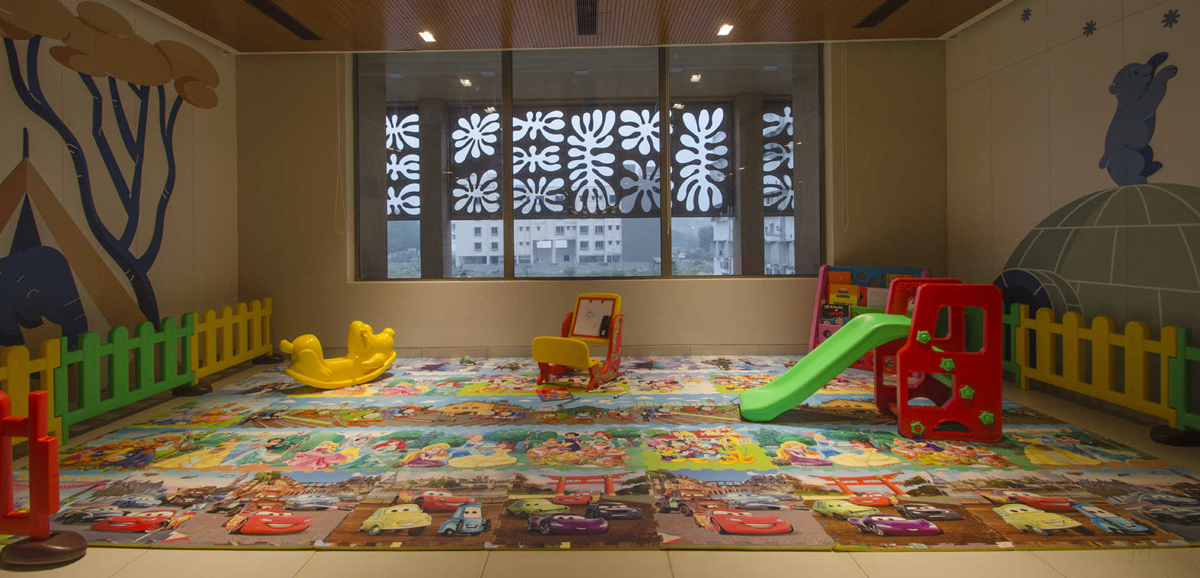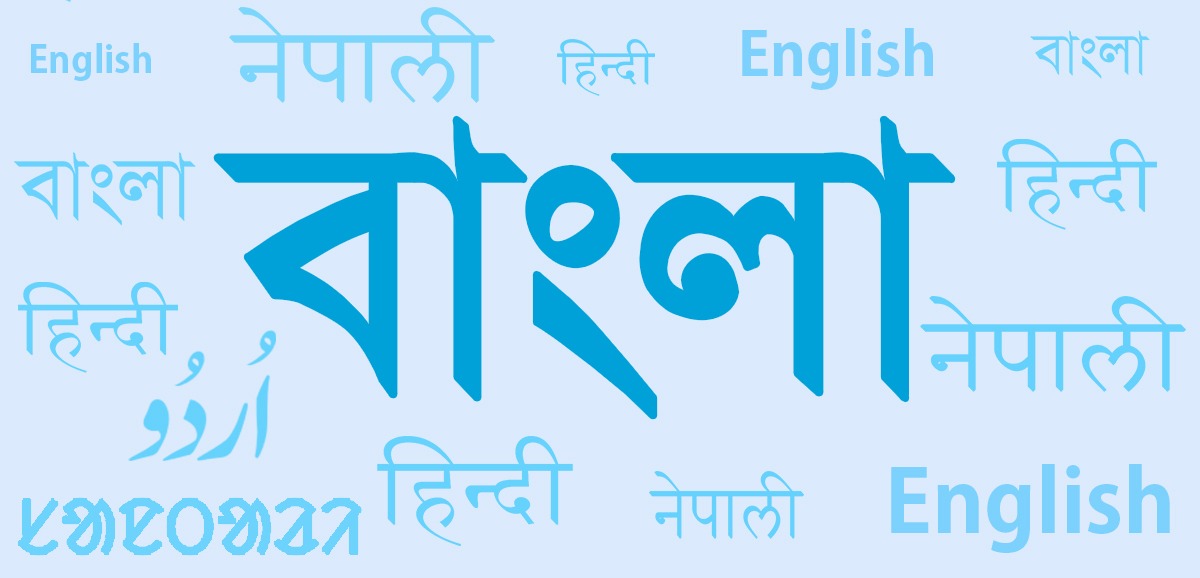The annual festival, Maati Utsav began as an initiative of Chief Minister Mamata Banerjee. It is celebrated to endorse farmers for their achievements as well as for promoting agriculture in the State.
This year, the chief minister inaugurated the two-day-long festival from Tarakeswar in Hooghly.
She also laid the foundation stone for a light hub at Chandannagar, Rani Rashmoni Green University and also inaugurated working hostels for women, named Karmanjali.
Highlights of the Chief Minister’s speech:
Till 2011, sixty years after independence, Bangla had only 12 universities. In the last seven years, we have set up 28 new universities. 10 more are in the pipeline.
Setting up ‘Mati Tirtha’ was our idea. We started celebrating Mati Utsav in 2013. United Nations started observing International Day of the Soil later. I have even penned a poem on ‘Mati’.
I am proud that I have returned the land to the farmers of Singur. I had sat on a hunger strike for 26 days in Kolkata to fight for the right of farmers. I also remember the days when I was on a dharna at Singur for 14 days.
We have fulfilled our promises. We give Rs 2,500 to every family who lost their land in Singur. We also have a special food package for them. That apart, we have given them financial assistance worth Rs 10,000 to carry out agricultural work.
Today, we have laid the foundation stone for a memorial at Singur, apart from a university in Hooghly district.
Our government is always with the farmers. We have waived off khajna tax on agricultural land. Mutation fees on agricultural land have also been waived off. Yesterday, we have taken a decision to waive off mutation fees on inherited land.
Farmers do not have to pay the premium of crop insurance. State Government bears the entire cost. Last year, we allocated Rs 625 crore for this purpose. This year, we will pay Rs 700 crore.
Centre is sending letters with the pictures of their leaders. Theirs is a useless scheme. They only want to take credit. We don’t want alms from the Centre, we want our dues.
We have started Krishak Bandhu scheme. Farmers with one acre of land will get Rs 5,000 per year in two instalments. If a farmer between the age of 18-60 passes away, their family will get Rs 2 lakh. We are spending Rs 5,000 crore for this project.
We are providing rice at Rs 2 per kg to 8.5 crore people. We buy the rice but give it to people at Rs 2/kg. For this we have to pay an additional Rs 5,000 as subsidy. We are doing this for the people.
The Centre was taking the credit for Ayushmaan Bharat scheme, although states bear half the cost. So, we have withdrawn from that scheme. We have our own scheme Swasthya Sathi. We are spending additional Rs 925 crore for the scheme. Earlier, 95 lakh people were covered under this scheme. Now Swasthya Sathi has been extended to 1.5 crore families (7.5 crore people).
Under the Swasthya Sathi scheme, a woman has been considered as a head of the family. The smart card will be in her name, and her parents will also be eligible for this insurance.
Like we have K1 (Kanyashree 1) scheme for school students, K2 for college students, we have started K3 scheme for girls studying in universities.
We have distributed one crore cycles under Sabooj Sathi scheme.
We have instituted several scholarship schemes – from Swami Vivekananda Merit scholarship to Sikshashree.
We have started insurance and pension schemes for journalists also.
What stopped the other parties from carrying out developmental works when they were in power? Why did they not renovate Tarakeshwar, Tarapith? Why did they not set up a light hub in Chandannagar?
Five new hostels for working women have been inaugurated today. We have named them Karmanjali.
We give a sapling to parents when a baby is born. When a person dies in a poor family, we give them financial assistance worth Rs 2,000 for cremation/burial.
Two of our schemes have been declared as ‘Champion Projects’ by UN – Utkarsh Bangla and Sabooj Sathi. They are among top 5 schemes, selected from among thousands of schemes from across the world. No other State from India has been selected.
Potato farmers are in distress because of excess production. The State Government is with the farmers. We will buy 10 lakh metric tonnes of potatoes from the farmers for various schemes like ICDS and mid-day meal.
We have given compensation of Rs 1,200 crore to farmers affected by natural disasters.
Our irrigation department has started a new project in Damodar Valley basin worth Rs 3,000 crore for flood prevention. This was supposed to be done by the Centre, but they did not. So, we have taken up the project. Nearly 30 lakh people will be benefitted.
A separate flood prevention plan worth Rs 40 crore has been taken up for Arambagh.
Nearly two crore people have lost their jobs across the country. In Bangla, we have reduced unemployment by forty per cent.


